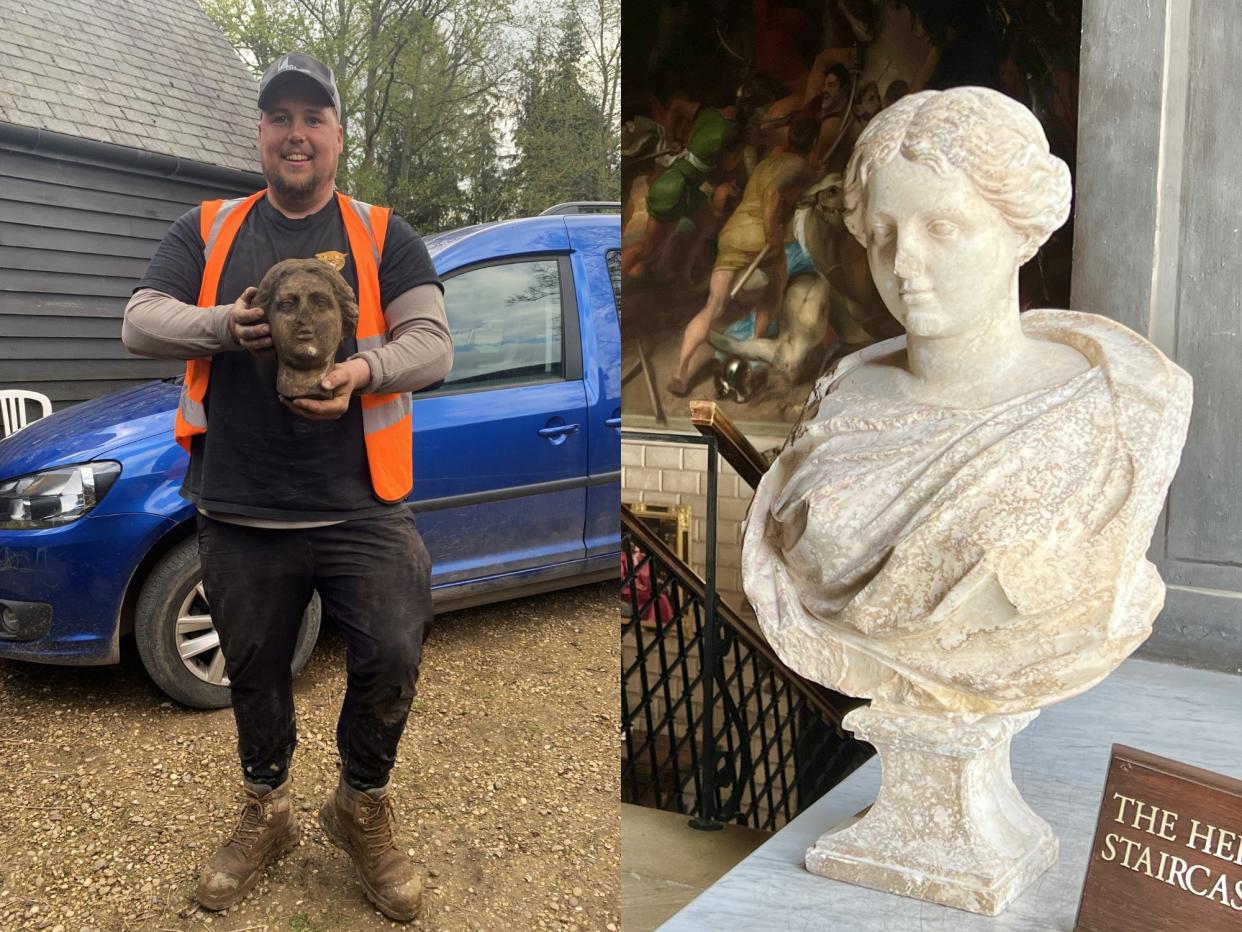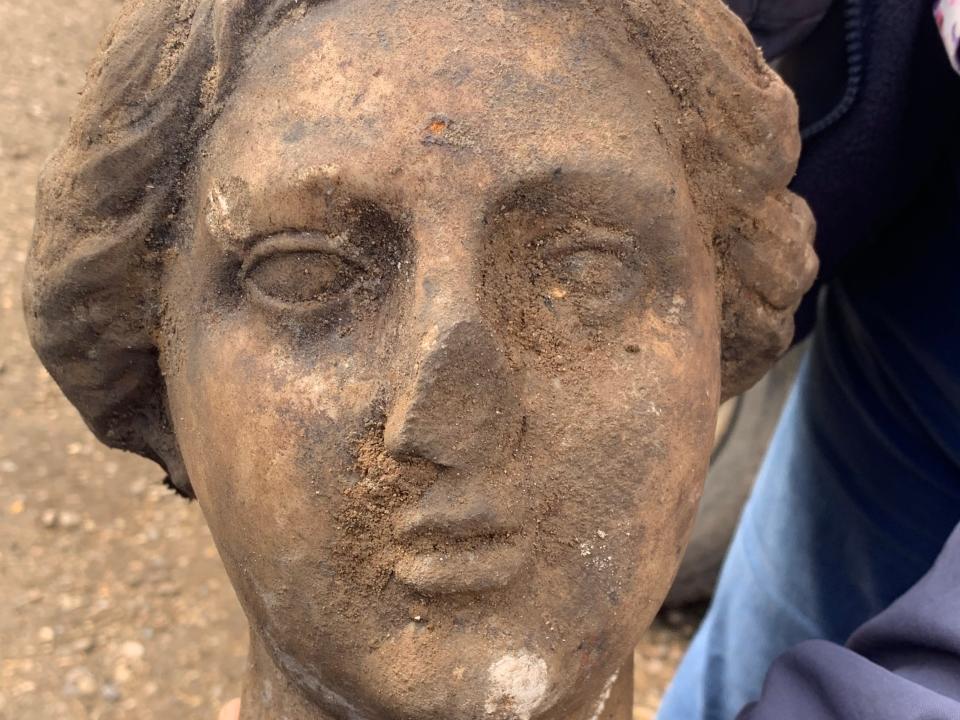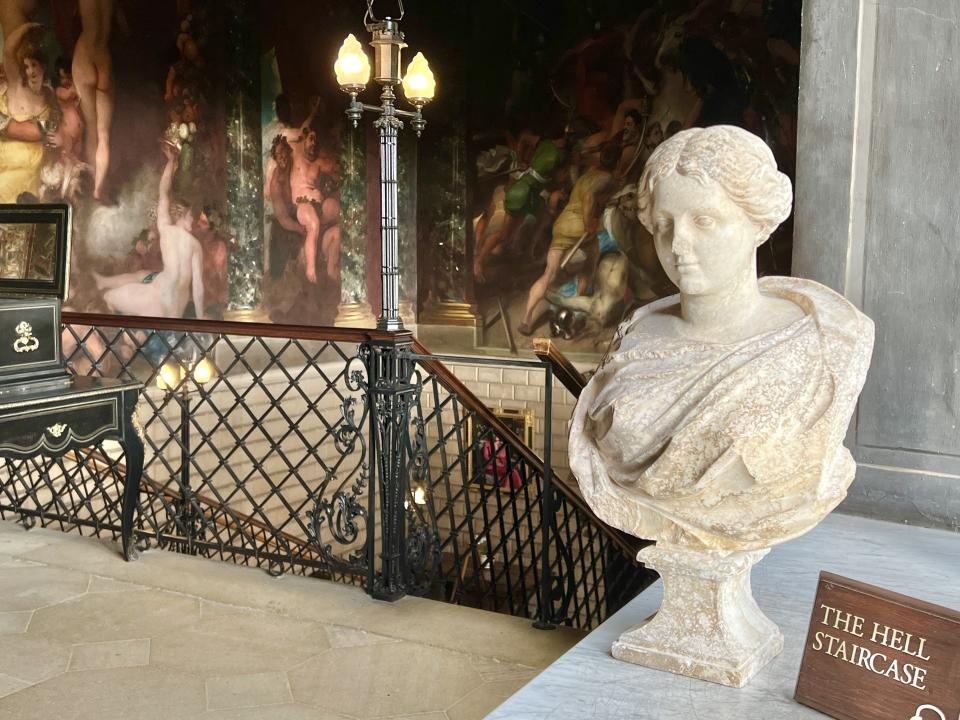An 1,800-year-old Roman statue was found in a UK parking lot. How it got there is a mystery.

Construction on the parking lot of an English estate unearthed a Roman statue.
Experts believe the statue dates back to the first or second century.
It's unknown how the statue ended up in the parking lot, but theories include a burglary gone awry.
A Roman statue was unearthed during construction on a British parking lot at one of the most expansive and impressive houses of the 16th century.
Digger driver Greg Crawley made the discovery in April 2023 while working in an overflow parking area at Burghley House in Peterborough, England, and now the restored sculpture can be viewed by the public.
The Roman statue was found during construction on a parking lot at Burghley House, a 16th-century English estate

Crawley said he discovered the marble head of a Roman lady in the spring of 2023.
"I had a real shock as the digger bucket rolled over what I thought was a big stone to reveal a face. When I picked it up, I realized it was a head of a statue," Crawley said in a press release by Burghley House. "I couldn't believe it when they told me it was a Roman marble statue."
The rest of the statue was found two weeks later, a short distance from where the head was unearthed.
Crawley said it was "an amazing feeling" to have discovered the statue, calling it his "best-ever discovery."
Experts believe an English aristocrat bought the sculpture during a tour of Italy in the 1700s
After the statue was cleaned of debris, experts were able to date the sculpture back to the first or second century.
Experts noted an iron dowel had been added later on so the statue could be attached to a bust or pedestal. Burghley House said this was a common practice in the 18th century to make artifacts more attractive to aristocrats buying wares abroad.
Burghley House believes the sculpture was brought back to England by Brownlow Cecil, the ninth Earl of Exeter and one of the house's two main curators who inherited the estate in 1754.
"It is believed that it was during one of the ninth Earl's two tours to Italy in the 1760s, when he purchased many antiquities, that he brought the sculpture back to Burghley," the house said in a statement.
However, Burghley House said it was 'a complete mystery' how the bust and head ended up buried on the grounds

The house said in a press release that experts theorized it could be the result of a burglary gone awry or simply the removal of the statue at some point in history.
It's also unclear exactly how long the statue remained underground before its discovery in 2023.
After their discovery, the head and bust were brought to Burghley House's curator, who then forwarded them on to a skilled conservator.
A professional conservator cleaned and reassembled the sculpture to its original form, unveiling the striking features of a Roman woman.
Burghley House is open to the public seasonally beginning March 16, and the sculpture can now be viewed in the Hell Hall of Burghley House, along with other artifacts purchased by the ninth Earl of Exeter.
The discovery of ancient artifacts can be life-changing for their finders, depending on the age and origin of the treasure
In 2018, a woman in Texas purchased a 52-pound marble sculpture for $35 that turned out to be a 2,000-year-old Roman bust.
According to Amineddoleh & Associates, the art law firm that advised the woman on the bust, the sculpture was most likely stolen from a courtyard in Pompejanum, Germany, after the Allied forces shelled the area in 1944 and 1945.
The firm said the bust could have fetched "hundreds of thousands of dollars" on the open market had it not been stolen property of the Bavarian State. Instead, in exchange for returning the bust to its rightful home in Germany, the woman received a confidential, small finders' fee.
However, other discoveries can have serious payoffs.
In 2022, a British couple renovating their kitchen found a collection of 17th and 18th-century gold coins underneath their existing kitchen floor. The collection later sold for £754,000, or $842,330, including fees, at auction.
The coins were hidden in a pot the same size as a soda can, the BBC reported.
Read the original article on Business Insider


